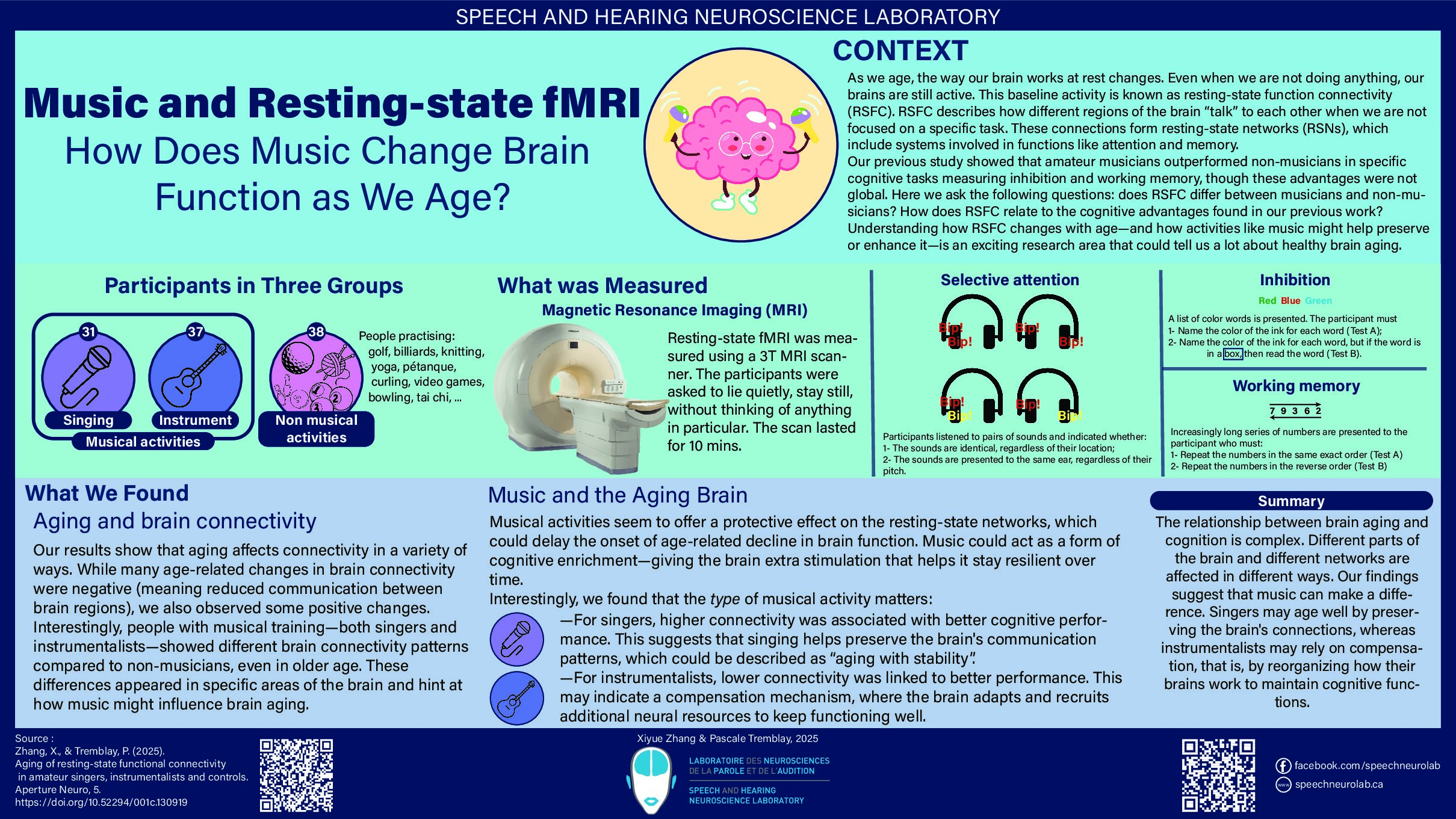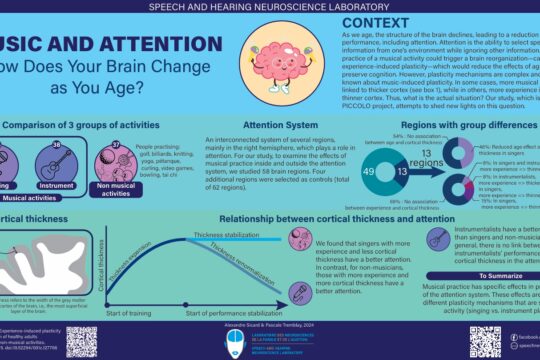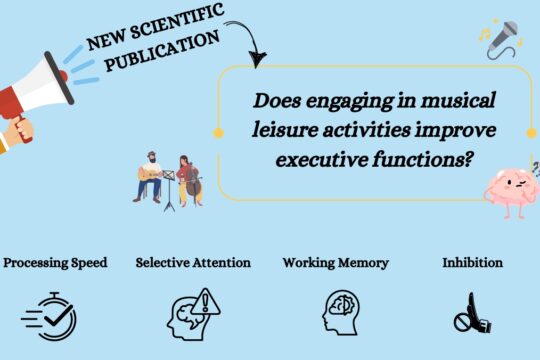New Scientific Article on the Impact of Singing on Brain Networks
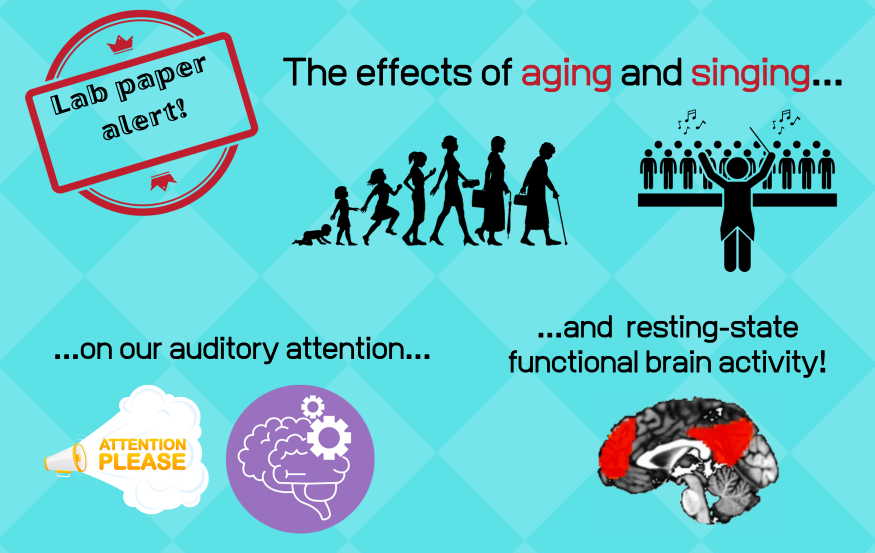
A study led by a doctoral student in the lab, Xiyue Zhang—just published in the Journal of Cognitive Neuroscience—explored, for the first time, the effect of amateur singing on resting-state functional magnetic resonance imaging (fMRI) and auditory attention. Why singing? Singing is a multifaceted behaviour that requires a fine motor control over the lips, tongue, vocal folds and respiratory system, the constant monitoring of auditory feedback to adjust performance and make precise sensorimotor adjustments during singing. It requires access to the speech and language network to articulate lyrics, and it necessitates attention, not only to monitor one’s performance as well as the performance of other choir members, but also to follow the directives of the choir conductor. Because of this complexity, auditory, speech, language, and dorsal attention networks are engaged during singing.
In our study, 84 participants aged 20 to 87 were recruited. They were Quebec native French speakers, right-handed, with no history of hearing, speech, language, psychological, neurological or neurodegenerative disorder. 41 participants had been singing in a choir every week for at least two years. The remaining 43 did not practise any musical activity on a regular basis. The two groups were comparable in terms of age, level of education, number of languages spoken, hearing, and cognitive functioning. They only differed in terms of singing.
The participants visited our lab twice. During the first visit, they took the Test of Attention in Listening (TAiL) which measures auditory attention. The TAiL includes three tasks. The first one evaluates the participants’ ability to detect auditory signals. The second task evaluates the capacity to distinguish two sounds based on their pitch (high, low) while ignoring their spatial localization (left ear, right ear). The third task evaluates the capacity to distinguish the spatial localization of sounds while ignoring their pitch. In both tasks, the participant’s attention is oriented to the task-relevant dimension (pitch, spatial localization). Yet, participants can still be distracted by the other dimension. When the two dimensions are both the same (same pitch, same ear) or both different (different pitches, different ears) the participants usually perform better. When the two sounds are the same in one dimension and different in the other (for example, two sounds with different pitches presented in the same ear), the participants usually perform worse.
In the second visit, we collected resting-state functional magnetic resonance images (fMRI), a type of imaging that allows us to investigate baseline brain activity. We then used an approach called “seed-based functional connectivity” to measure the temporal correlation (that is, the correlation over time between signal in different brain regions) between a set of brain regions (called “seeds”) and all the other voxels in the brain. This approach can reveal large networks of brain regions that are co-activated at rest. We examined five resting-state networks that are important for singing: the language network, the speech network, the auditory network, the dorsal attention network (DAN) and the default mode network (DMN). The DMN is most investigated in resting state studies. It is more active during rest and self-referential processing, such as survival-salient information evaluation, remembering the past and planning the future. The DMN provides not only an index of basic brain physiology but it is also sensitive to brain pathology including neurodegenerative disorders. Figure 1 shows the location of the DMN.
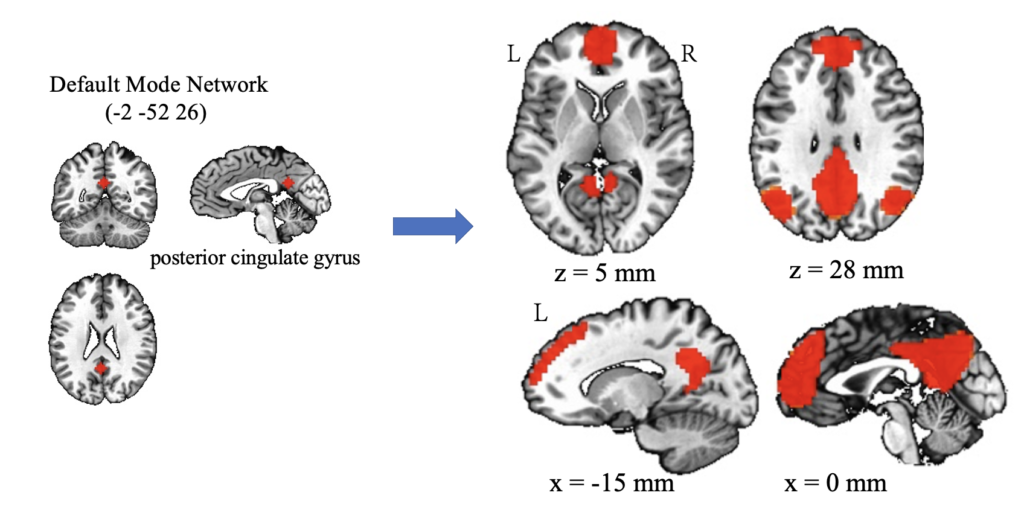
Our analyses revealed that the relation between aging and resting-state functional connectivity (RSFC) is complex. RSFC was generally lower in older adults, but some regions exhibited higher RSFC. For example, in the language network, RSFC was higher with age in the left IFG (orange in Figure 2) and lower with age in the left IFG and the orbitofrontal gyrus (blue).
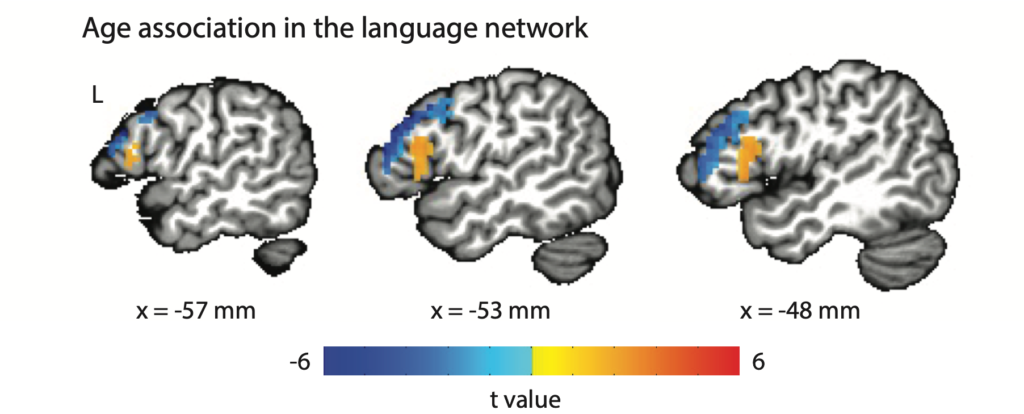
Importantly, our results also revealed that RSFC in amateur singers differs from RSFC in non-singers in the DMN, but not in the other four networks. In the DMN, some regions showed an interaction between age and group, meaning that, in those regions, RSFC was positively associated with age in singers and negatively associated with age in non-singers. This is illustrated in Figure 3.
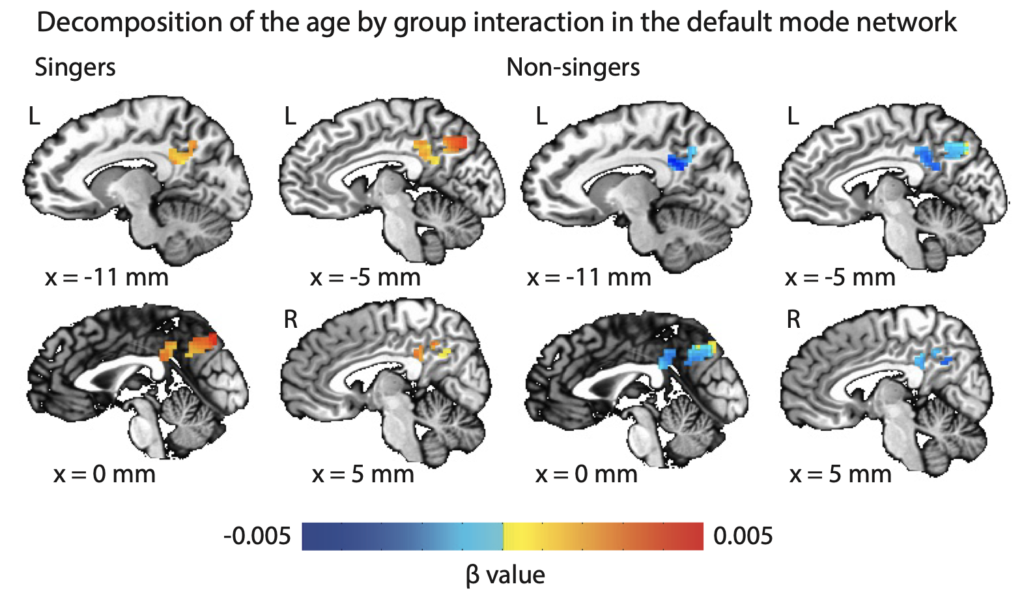
Our analyses also indicated that in the DMN, specifically in the bilateral precuneus, higher RSFC was associated with worse auditory attention (TAiL performance). This could reflect a failed attempt to engage more neural resources to maintain performance in older adults. Alternatively, this could also be explained by a reduced capacity for older adults to decrease RSFC. Indeed, activity in the DMN is high at rest, but is inhibited during tasks allowing the brain to focus on a task such as memorizing a phone number or following a conversation. This mechanism could be diminished in healthy aging.
In sum, our study shows that baseline brain activity—as indexed by RSFC—is vastly different in older compared to younger adults in several networks. In contrast, singing-related differences were limited to one network, the default-mode network—the core network at play during rest. Importantly, activity is this network was associated with auditory attention. Further studies are needed to understand the relationship between musical activities and RSFC. Importantly, very little is known about how different musical activities—singing and playing instruments—affect brain RSFC in aging. Do musical activities of any type affect brain activity in a similar way or are there differences between playing a musical instrument and dinging? Are some activities more beneficial? We are currently analyzing RSFC data in another, larger sample of singers, instrumentalists and non-musicians to address these questions. Stay tuned for more on this new project!
And thanks to everyone who participated in this study!
To read the full article:
Xiyue Zhang, Pascale Tremblay; Aging of Amateur Singers and Non-singers: From Behaviour to Resting-state Connectivity. J Cogn Neurosci 2023; doi: https://doi.org/10.1162/jocn_a_02065
The consult the associated dataset in Borealis:
https://borealisdata.ca/dataset.xhtml?persistentId=doi:10.5683/SP3/PSNGYT
Suggested Readings:

